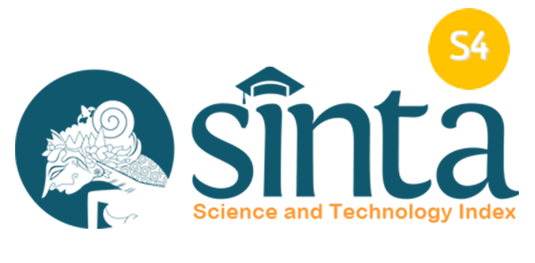Artificial Intelligence in English Language Learning: A Systematic Review of AI Tools, Applications, and Pedagogical Outcomes
DOI:
https://doi.org/10.36663/tatefl.v5i2.912Keywords:
Artificial Intelligence (AI), English Language Teaching, Systematic ReviewAbstract
This systematic review examines the role of artificial intelligence (AI) in English language teaching (ELT), analyzing AI tools, applications, and their pedagogical outcomes. AI technologies, such as chatbots, intelligent tutoring systems, and speech recognition software, are increasingly used to enhance language learning experiences. The review follows the Preferred Reporting Items for Systematic Reviews and Meta-Analyses (PRISMA) model, a standardized approach that ensures transparency and rigor in identifying, screening, and analyzing relevant literature. PRISMA emphasizes clear documentation of the selection process, including inclusion and exclusion criteria, to provide a systematic and replicable methodology for comprehensive reviews. Through thematic qualitative analysis of recent literature indexed in Scopus and Web of Science, key themes emerged regarding AI types, applications, teacher and learner perspectives, and ethical considerations. Findings reveal that AI tools enhance learner engagement, provide personalized learning experiences, and improve language proficiency, particularly in speaking and writing. However, challenges remain, such as accessibility barriers, teacher preparedness, and ethical concerns around data privacy and bias. This review proposes a framework for AI integration in ELT, focusing on access, teacher training, ethical standards, and blended learning models to optimize AI’s benefits. The study underscores the need for targeted teacher training and ethical standards to maximize AI’s effectiveness and sustainability in ELT. This framework and the review findings aim to support educators, developers, and policymakers in fostering an AI-enriched learning environment that aligns with educational goals while addressing existing limitations.
Downloads
References
AbuSahyon, A. S. A. E., Alzyoud, A., Alshorman, O., & Al-Absi, B. (2023). AI-driven Technology and Chatbots as Tools for Enhancing English Language Learning in the Context of Second Language Acquisition: A Review Study. International Journal of Membrane Science and Technology, 10(1), 1209-1223. https://doi.org/10.15379/ijmst.v10i1.2829 DOI: https://doi.org/10.15379/ijmst.v10i1.2829
Amin, M. Y. M. (2023). AI and chat GPT in language teaching: Enhancing EFL classroom support and transforming assessment techniques. International Journal of Higher Education Pedagogies, 4(4), 1-15. https://doi.org/10.33422/ijhep.v4i4.554 DOI: https://doi.org/10.33422/ijhep.v4i4.554
Aryanti, R. D., & Santosa, M. H. (2024). A systematic review on artificial intelligence applications for enhancing EFL students’ pronunciation skill. The Art of Teaching English as a Foreign Language (TATEFL), 5(1), 102–113. https://doi.org/10.36663/tatefl.v5i1.718 DOI: https://doi.org/10.36663/tatefl.v5i1.718
Bertino, E., Kundu, A., & Sura, Z. (2019). Data transparency with blockchain and AI ethics. Journal of Data and Information Quality (JDIQ), 11(4), 1-8. https://doi.org/10.1145/3312750 DOI: https://doi.org/10.1145/3312750
Chakravarti, S. (2023). Innovations in teacher development, personalized learning, and upskilling the workforce. IGI Global. https://doi.org/10.4018/978-1-6684-5518-0 DOI: https://doi.org/10.4018/978-1-6684-5518-0
Clarke, V., & Braun, V. (2017). Thematic analysis. The journal of positive psychology, 12(3), 297-298. https://doi.org/10.1080/17439760.2016.1262613 DOI: https://doi.org/10.1080/17439760.2016.1262613
Dennis, N. K. (2024). Using AI-powered speech recognition technology to improve English pronunciation and speaking skills. IAFOR Journal of Education, 12(2), 107-126. DOI: https://doi.org/10.22492/ije.12.2.05
Didas, M., Chali, F. H., & Noe, E. (2024). Facets related to challenges and prospects of cloud computing adoption in resource-constrained settings: Systematic review analysis. International Journal of Advanced Computer Research, 14(66), https://doi.org/10.19101/IJACR.2023.1362017 DOI: https://doi.org/10.19101/IJACR.2023.1362017
Fountoulakis, M. S. (2024). Evaluating the impact of AI tools on language proficiency and intercultural communication in second language education. International Journal of Second and Foreign Language Education, 3(1), 12-26. https://doi.org/10.33422/ijsfle.v3i1.768 DOI: https://doi.org/10.33422/ijsfle.v3i1.768
Giray, L. (2024). “Don’t Let Grammarly Overwrite Your Style and Voice:” Writers’ advice on using Grammarly in writing. Internet Reference Services Quarterly, 28(3), 1-11. https://doi.org/10.1080/10875301.2024.2344762 DOI: https://doi.org/10.1080/10875301.2024.2344762
Gu, J. (2024). Digital tools in language learning: optimizing memory and attention for college students. International Journal of Human–Computer Interaction, 1-11. https://doi.org/10.1080/10447318.2024.2400384 DOI: https://doi.org/10.1080/10447318.2024.2400384
Jegede, O. O. (2024). Artificial intelligence and English language learning: Exploring the roles of AI-driven tools in personalizing learning and providing instant feedback. Universal Library of Languages and Literatures, 1(2), 6-19. https://doi.org/10.70315/uloap.ullli.2024.0102002 DOI: https://doi.org/10.70315/uloap.ullli.2024.0102002
Kessler, G. (2018). Technology and the future of language teaching. Foreign language annals, 51(1), 205-218. https://doi.org/10.1111/flan.12318 DOI: https://doi.org/10.1111/flan.12318
Liakina, N. & Liakin, D. (2023). Speech technologies and pronunciation training: What is the potential for efficient corrective feedback?. In U. Kickhöfel Alves & J. Alcantara de Albuquerque (Ed.), Second language pronunciation: Different approaches to teaching and training (pp. 287-312). Berlin, Boston: De Gruyter Mouton. https://doi.org/10.1515/9783110736120-011 DOI: https://doi.org/10.1515/9783110736120-011
Luckin, R., & Cukurova, M. (2019). Designing educational technologies in the age of AI: A learning sciences‐driven approach. British Journal of Educational Technology, 50(6), 2824-2838. https://doi.org/10.1111/bjet.12861 DOI: https://doi.org/10.1111/bjet.12861
Miao, F., Holmes, W., Huang, R., & Zhang, H. (2021). AI and education: A guidance for policymakers. Unesco Publishing.
Mishra, D. R., & Varshney, D. (2024). Comprehensive analysis of human and AI task allocation in the education sector: Defining futuristic roles and responsibilities. World Journal of Advanced Research and Reviews, 22(3), 1883–1893. https://doi.org/10.30574/wjarr.2024.22.3.1949 DOI: https://doi.org/10.30574/wjarr.2024.22.3.1949
Mohamed, M. S. P. (2024). Exploring ethical dimensions of AI-enhanced language education: A literature perspective. Technology in Language Teaching & Learning, 6(3), 1-11. https://doi.org/10.29140/tltl.v6n3.1813 DOI: https://doi.org/10.29140/tltl.v6n3.1813
Moher, D., A. Liberati, J. Tetzlaff, and D. Altman. (2009). Preferred reporting items for systematic reviews and metaanalyses: The PRISMA statement. PLoS medicine, 6(7). https://doi.org/10.1371/journal.pmed.1000097 DOI: https://doi.org/10.1371/journal.pmed.1000097
Sajja, R., Sermet, Y., Cikmaz, M., Cwiertny, D., & Demir, I. (2024). Artificial intelligence-enabled intelligent assistant for personalized and adaptive learning in higher education. Information, 15(10), 596. https://doi.org/10.3390/info15100596 DOI: https://doi.org/10.3390/info15100596
Song, C., & Song, Y. (2023). Enhancing academic writing skills and motivation: assessing the efficacy of ChatGPT in AI-assisted language learning for EFL students. Frontiers in Psychology, 14. https://doi.org/10.3389/fpsyg.2023.1260843 DOI: https://doi.org/10.3389/fpsyg.2023.1260843
Thomas, J., & Harden, A. (2008). Methods for the thematic synthesis of qualitative research in systematic reviews. BMC Medical Research Methodology, 8, 45. https://doi.org/10.1186/1471-2288-8-45 DOI: https://doi.org/10.1186/1471-2288-8-45
Tolstykh, O. M., & Oshchepkova, T. (2024). Beyond ChatGPT: roles that artificial intelligence tools can play in an English language classroom. Discover Artificial Intelligence, 4(1), 60. https://doi.org/10.1007/s44163-024-00158-9 DOI: https://doi.org/10.1007/s44163-024-00158-9
Ulla, M. B., Advincula, M. J. C., Mombay, C. D. S., Mercullo, H. M. A., Nacionales, J. P., & Entino-Señorita, A. D. (2024). How can GenAI foster an inclusive language classroom? A critical language pedagogy perspective from Philippine university teachers. Computers and Education: Artificial Intelligence, 7. https://doi.org/10.1016/j.caeai.2024.100314 DOI: https://doi.org/10.1016/j.caeai.2024.100314
Vanisree, M., Ranjan, M. J., Dhanavel, G., Sekhar, K. C., Babu, S. G., & Sharma, S. (2024). Role of artificial intelligence in facilitating English language learning for non-native speakers. Nanotechnology Perceptions, 20, 1263–1272. https://doi.org/10.62441/nano-ntp.v20iS9.102 DOI: https://doi.org/10.62441/nano-ntp.v20iS9.102
Downloads
Published
How to Cite
Issue
Section
License
Copyright (c) 2024 Dana Kristiawan, Khaliq Bashar, Dian Arief Pradana

This work is licensed under a Creative Commons Attribution-ShareAlike 4.0 International License.
License Terms
- Attribution — You must give appropriate credit, provide a link to the license, and indicate if changes were made. You may do so in any reasonable manner, but not in a way that suggests the licensor endorses you or your use.
- ShareAlike — If you remix, transform, or build upon the material, you must distribute your contributions under the same license as the original.
- No additional restrictions — You may not apply legal terms or technological measures that legally restrict others from doing anything the license permits.

















